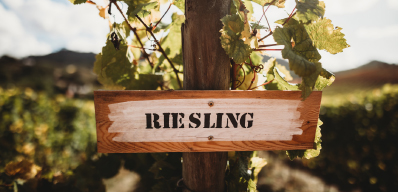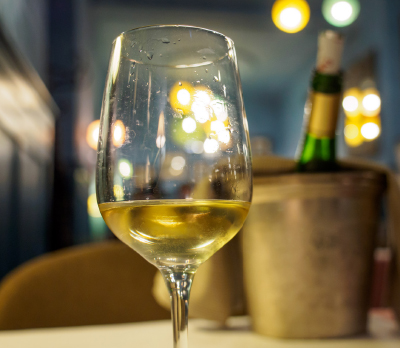RIESLING WINES
A Tour Through Germany & Alsace
By Tina Mulqueen
Those who have ventured to the Finger Lakes are likely familiar with New York-style Rieslings, known for their consistent quality, earthiness, and intense fruit characters.
But as good as New York State grapes can be, I wanted to travel a bit farther to explore Riesling’s other famous regions: France and Germany. Considering the pandemic, actual travel was impossible, so my pal William Oben, a wine enthusiast and founder of WineBox (wineboxpdx.com), stepped in once again to cultivate an authentic tasting experience.
William selected wines that aren’t hard to find. Many of them available at your local wine shop. If you do decide to travel with us to Europe vicariously, don’t neglect your pairing. As William says, “Riesling is a food wine.”
GERMANY
“One of the tell-tale characteristics [of German Riesling] is the petrol smell,” explains William. Other characteristics of note include sharp acidity and honeysuckle flavors. We tried Rieslings from three well-known German producers.
Von Winning
Winnings Riesling
“One of the things I love about Riesling is the difference in the nose and the palate,” explains William. This Von Winning Riesling is a great example. On the nose, one instantly picks up on the characteristic petrol and stone fruit. The palate is fruit-forward, beginning with apricot and zesty citrus and giving way to spice and a faint residual sugar that draws out the fruit to the finish. The wine feels a bit waxy on the tongue, thanks to the resin in the grape, which can give Rieslings an oily texture. This medium-dry wine can be paired with a light and salty snack and is available for about $18.
Weingut
Robert Weil - Tradition
True to the region, this wine also presents with petrol on the nose. A sweeter smell marks the semi-dry wine, echoed on the palate with a candied apple flavor. Bright acidity and distinct minerality give structure to the wine and lengthen the finish. Try it with a spicy dish like Kung Pao chicken, which will balance the food’s spice with the wine’s natural sweetness. This everyday wine from the renowned producer Robert Weil can be found for about $30.
Donnhoff
Oberhauser Brucke Riesling Auslese
The first thing one notices about this Riesling from Donnhoff is the residual sugar apparent in the glass that almost gives it an effervescent look. The sugar foreshadows a dessert quality on the palate. Ripe fruit coalesces with crisp acidity for a balanced tension. There’s a good deal of complexity and nuance to this wine, which changes throughout the sip. While not overly sweet, the nectarous quality would pair well with cheese. You can find this one for about $100.


FRANCE
“In Alsace, the wine’s profile is all about the vineyard,” William notes that French Riesling wines are a little weightier because of the differences in the soil. We tasted two Rieslings from Alsace.
Domaine Ostertag
Les Jardins Riesling
With honeysuckle and white peach on the nose, this aromatic wine smells sweeter than it is. Citrus flavors and spice interplay on the palate. It doesn’t surprise me to learn that the winemaker, André Ostertag, trained in Burgundy - the terroir’s influence is distinct and expressive. Compared to its German Riesling counterparts, this wine is on the dry side but with a distinct nectar characteristic. Pair it with a salmon or a creamy sauce. You can find it for around $35.
Domaine Weinbach
Riesling
The bouquet of this wine is floral, further emphasizing the distinction between French and German-style Rieslings. On the palate, this wine is acid-driven with complexity, marked by flavors of citrus and green apple and showcasing delicate but well-integrated minerality. Like the Domaine Ostertag, the minerality showcases the importance of the soil to Alsatian Rieslings. The exceptionally long finish showcases lingering notes of honey and tangerine. In defiance of William’s clear food-pairing directions, I would drink this wine all by itself. You can find it for about $55.




